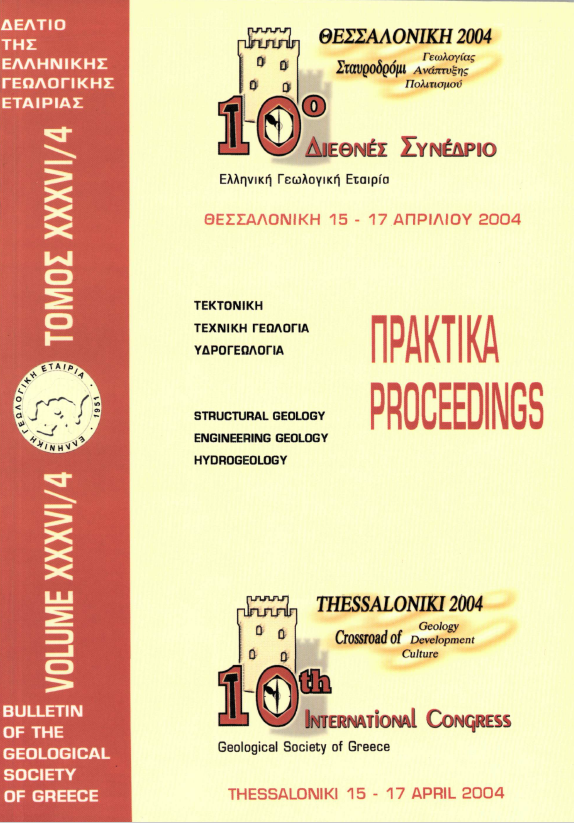THE NAPPE STRUCTURE OF THE TECTONIC WINDOW OF DOLIANA (CENTRAL PELOPONNESUS, GREECE)
Abstract
In the tectonic window of Doliana (central Peloponnesus, Greece) a variety of geological formations occurs deriving from different sedimentation palaeoenvironments and characterized by different tectonometamorphic evolution. These rocks initially formed thrust nappes of great extension and thickness which stacked one over the other during the Lower Oligocene-Lower Miocene. The early compressing structures that were formed by the emplacement of the nappes were almost totally overprinted by the later-orogenic extension that affected the nappe-column in the Upper Miocene-Lower Pliocene. Its main tectonic characteristic was the formation of low-angle normal faults, which constitute the tectonic contacts of the nappes. These faults led to the exhumation of the formerly deeply buried metamorphic rocks that are forming the core of the tectonic window. Apart from these structures during the evolution of this deformation phase an intense thinning of the units of the upper plate took place, causing the upper units coming closer or next to the lower ones. After the Lower Pliocene a second extensional phase affected the already thinned nappe-column with the formation of high-angle normal faults.
Article Details
- How to Cite
-
Lekkas, S., & Skourtsos, E. (2004). THE NAPPE STRUCTURE OF THE TECTONIC WINDOW OF DOLIANA (CENTRAL PELOPONNESUS, GREECE). Bulletin of the Geological Society of Greece, 36(4), 1662–1670. https://doi.org/10.12681/bgsg.16571
- Section
- Tectonics and Geodynamics

This work is licensed under a Creative Commons Attribution-NonCommercial 4.0 International License.
Authors who publish with this journal agree to the following terms:
Authors retain copyright and grant the journal right of first publication with the work simultaneously licensed under a Creative Commons Attribution Non-Commercial License that allows others to share the work with an acknowledgement of the work's authorship and initial publication in this journal.
Authors are able to enter into separate, additional contractual arrangements for the non-exclusive distribution of the journal's published version of the work (e.g. post it to an institutional repository or publish it in a book), with an acknowledgement of its initial publication in this journal. Authors are permitted and encouraged to post their work online (preferably in institutional repositories or on their website) prior to and during the submission process, as it can lead to productive exchanges, as well as earlier and greater citation of published work.








